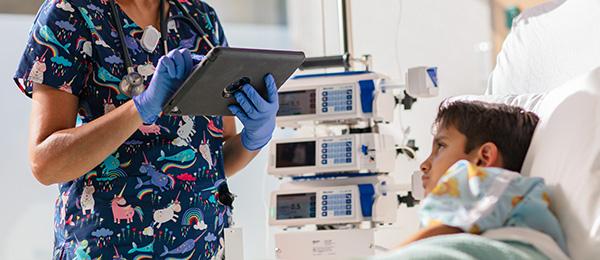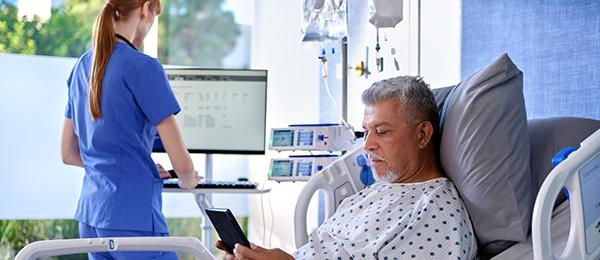Five Steps to Medical Device Connectivity With Purpose
What is the purpose of medical device connectivity? While most healthcare professionals would agree that connectivity is important, it isn’t typically the end goal of a project. More often, the purpose of connectivity lies in supporting a clinical or operational outcome for patients and care teams.
Of course, as connected device implementations become more complex, keeping those higher purposes in mind can prove challenging. We asked two of our experts for their advice on how healthcare teams can set up connectivity projects to support the most meaningful outcomes — at go-live and beyond.

Understand the Clinical Workflow
The first step is to begin with a clear understanding of the problem you are trying to solve by taking a deep dive into the current clinical workflow. Then, and only then, can you evaluate potential changes that could help you address the challenge — and consider how those changes may lead to others (intentional or not). Najia Khawar, Senior Director, Baxter Project Management Office, explains:
“When we integrate a medical device into a workflow, we start by mapping out the entire process,” says Khawar. “Many times, one change leads to others. The best time to identify these issues is early on — so clinical and IT teams need to come together to fully flesh out the new process.”

Automate What You Can
After identifying what changes are needed for a certain workflow, consider all the ways the connected medical device could automate steps and take manual processes off clinicians’ hands.
“Our goal for automation is typically to reduce steps and reduce redundancy,” says Mary Reagan-Zingler BSN, RN, Senior Manager, Baxter Enterprise Strategy & Informatics. “For example, if clinicians are documenting data in multiple ways — perhaps recording vital signs on a sticky note and then transferring them to the EMR later — we can leverage connectivity between the patient monitor and the EMR so the clinician can spend their time on activities that are more meaningful for their patients and themselves.”

Test and Test Again
Once all teams align on a new workflow, it’s time for testing. Whether you have a full simulation center or you’re staging scenarios in a biomed room, when it comes to testing, more is better.
“You want to make your testing scenarios as rigorous as possible,” advises Khawar. “Aim for high volume and cover every use case. This is the time to break things and find failure points. See what happens in a testing environment before rolling it out to the broader hospital.”

Focus on the “When” and “Who” of Training
Few would argue with the importance of staff training when rolling out connected medical devices. While planning out the agenda, make sure to also put thoughtful consideration into timing — and who is involved.
“Timing of training is important,” notes Khawar. “Your teams will need robust support in the early days, helping them accept new technologies and become comfortable with different workflows. Also make sure you’re thinking through all the people who need training. Non-clinical team members like EVS or transport may need to change their workflows as well, and leaving them out of training can create unnecessary hiccups during roll-out.”

Measure Your Return on Investment in Many Ways
Hard costs are crucial elements of any return on investment calculation. However, indirect savings can also have powerful impacts on your bottom line.
“Don’t underestimate the importance of staff satisfaction and time savings as part of your ROI,” says Reagan-Zingler. “They can both contribute greatly to retention, recruitment and workforce strategies.”
Redefine Healthcare Delivery With Meaningful Connectivity
Connecting medical devices into a clinical workflow is about more than technology. It’s about connecting patients and care teams to the information they need, when and where they need it. And at Baxter, it’s an important part of how we are working to redefine healthcare delivery.

Najia Khawar, Senior Director, Baxter Project Management Office
At Baxter, Najia leads a national PMO overseeing complex healthcare technology deployments across hospitals and health systems. With over 15 years of experience in healthcare operations and digital transformation, she specializes in professional services strategy, connected care implementations, and building high-impact partnerships with leading IDNs.



